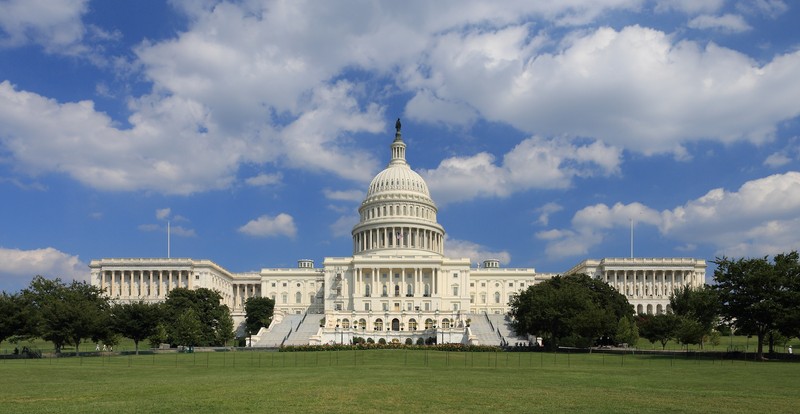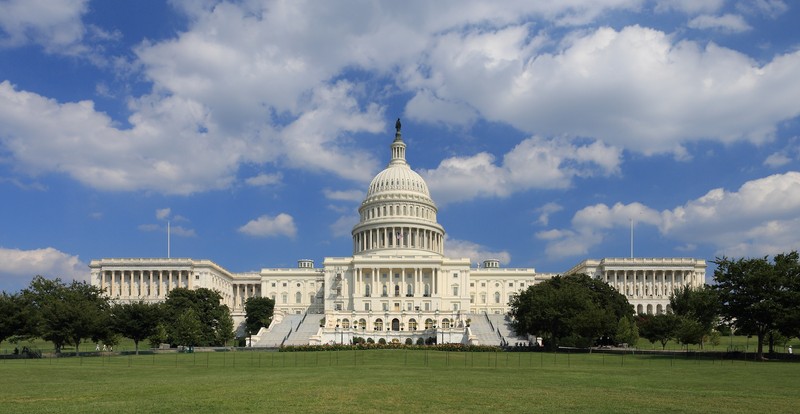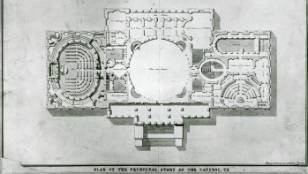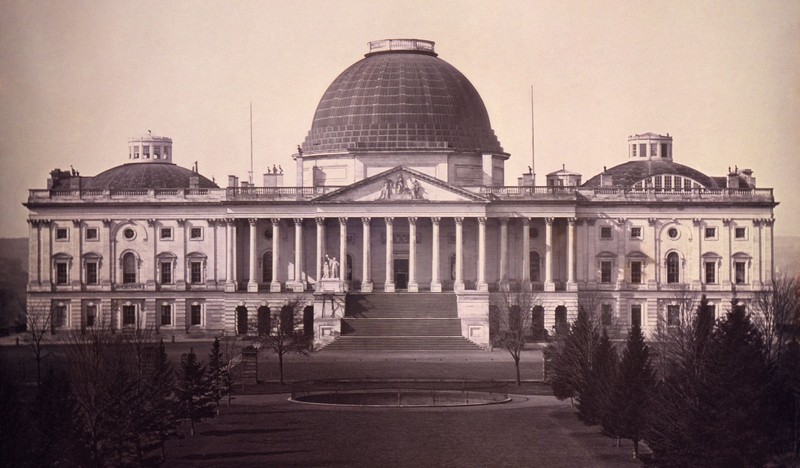United States Capitol Building
Introduction
Text-to-speech Audio
Images
The U.S. Capitol building houses both the House of Representatives and the Senate. It is an example of neoclassical style and is one of the most recognizable buildings in the world.


William Thornton's original blueprint for the United States Capitol. Over time, it was modified to include new design elements and accommodate a growing nation. Photo from Architect's Virtual Capitol.

A daguerreotype photograph of the Capitol in 1846. Photo from Library of Congress.

Backstory and Context
Text-to-speech Audio
In 1791, French engineer Pierre Charles L'Enfant was chosen to plan the city Washington, the new seat of the United States government. Using his keen design skills, he believed that a small hill, then known as Jenkins' Hill, elevating the relatively flat landscape was a "pedestal waiting for a monument." It was there he decided Congress, the representatives of the people, would preside above the city. Dr. William Thornton, a physician in the British West Indies, submitted the winning design in 1793, which President Washington admired for its "grandeur, simplicity and convenience." Thornton is often considered the first "Architect of the Capitol," a title that now refers to both an individual Architect and an agency dedicated to caring for and developing the Capitol. Noted French architect Benjamin Henry Latrobe, the first professional architect in the United States, oversaw much of the early construction.1
Construction began in 1793 and has been ongoing ever since. Tasks have ranged from building wings for the Senate and House of Representatives to installing art, from installing a cast-iron dome in the Rotunda to updating heating and cooling systems. Its purpose has also fluctuated. In 1800, for example, the Capitol housed Congress, the Supreme Court, the Library of Congress, and D.C. courts, all in cramped quarters. Today, the main Capitol building is home to the House and Senate chambers, though the entire Capitol Complex includes over a dozen office buildings and a visitors center. During the Civil War, the Capitol served as a military barracks, hospital and bakery.2 Regular Sunday services took place until after the Civil War. Presidents Thomas Jefferson and James Madison were notable regulars at church services in the Capitol building.
Whether having visited in person, seen pictures or witnessed
the Capitol building on television, most people are familiar with the sight of
the Rotunda, a circular room in the center of the building, and the dome above it. There is a “Statue of Freedom” on the top of
the dome. The Rotunda has often been on display following the death of a president.
Eleven presidents have lain in state in the Rotunda for public viewing. An area
below the Rotunda is called the Crypt and was designed to be the final resting
place of George Washington. Washington’s will, however, stipulated that he be
buried at Mount Vernon. The Crypt is open to visitors and does feature exhibits
on the history of the Capitol.
Countless points of interest are found in the Capitol, the Visitors Center website can help guide visitors to what piques their interests. In the Hall of Columns, statues from the National Statuary Hall Collection stand among 28 beautiful fluted columnns. The basement is home to an area that was a spa-like facility designed for members of Congress prior to modern plumbing. Another point of interest is a metal staircase with 365 steps, one for each day of the year, that goes from the basement to an outdoor walkway on top of the dome.
History is made every day at the Capitol. It is the setting of important discussions, debates, and votes on legislation in the House and Senate chambers, on topics such as healthcare, budgets, foreign affairs, energy, education, and civil rights. Furthermore, the Capitol is a gathering place for momentous historical events including presidential inaugurations, the annual State of the Union addresses, Independence Day and Memorial Day events, and memorials in which prominent figures lie in state.Sources
2. "History of the U.S. Capitol Building." Architect of the Capitol; "History of the Architect of the Capitol." Architect of the Capitol.
"History of the Architect of the Capitol." Architect of the Capitol. Accessed September 2017. Accessed September 2017. https://www.aoc.gov/about-aoc/history-architect
"History of the U.S. Capitol Building." Architect of the Capitol. Accessed September 2017. https://www.aoc.gov/history-us-capitol-building
"United States Capitol." National Mall and Memorial Parks. National Park Service. Department of the Interior. Last modified March 10, 2017. Accessed September 2017. https://www.nps.gov/places/us-capitol.htm
